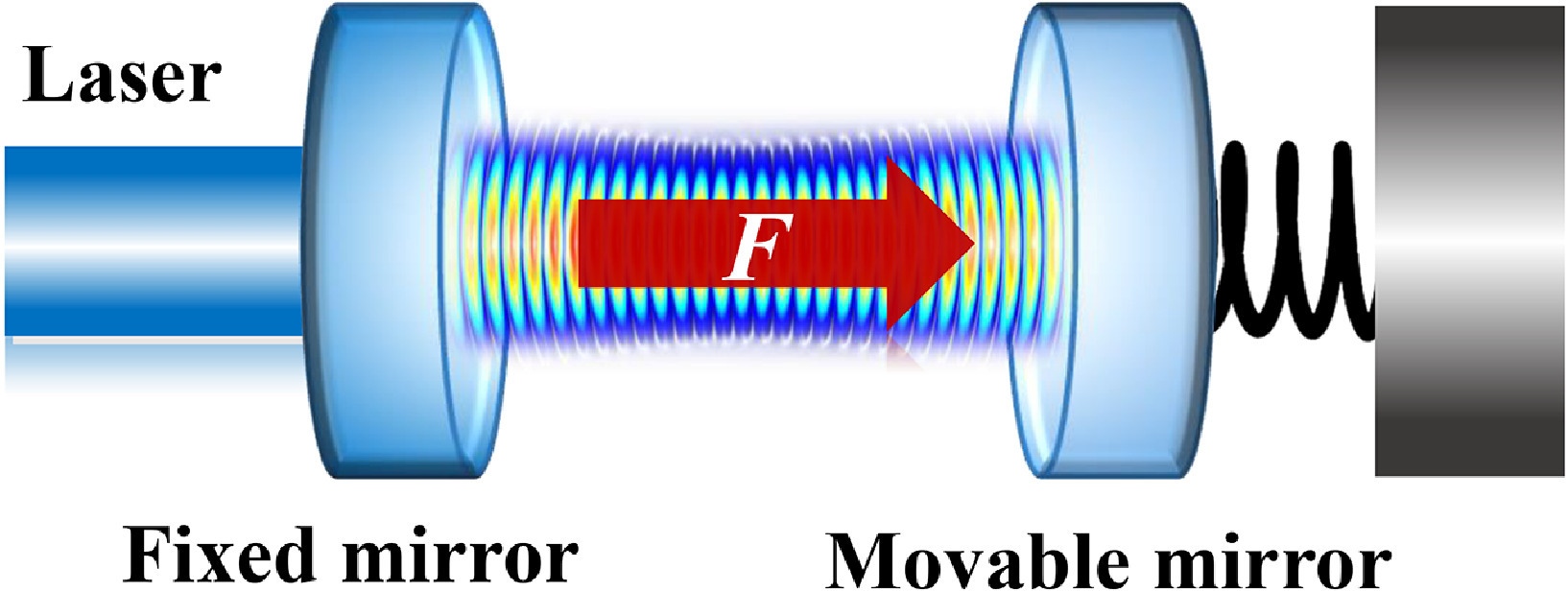A recent research participated by the researcheres of Universidad Mayor, Dr. Miguel Orszag and Dr. Bing He, has changed the previous view on an important property of optomechnaical systems.
Optomechanical systems can be as simple as two pieces of mirrors, one of which can be moved by the pressure of the light trapped between the mirrors, while it is pushed back to the previous equlibrium position by a spring. If the light in the space between the two mirrors (called cavity) is strong enough, the movable mirror will begin to socillate, and it will also modify the spectrum of the light in the cavity. To have a sufficient pressure on the movable mirror, a pump laser should input hugh number of photons into the cavity. Previously, it was intuitively believed that a stronger pump laser will always induce a larger oscillation of the mirror. However, the new research proves that the reality is not so simple; the stabilized oscillation energy of the mirror can have a complicated relation with the laser power as in the following figure (the horizontal axis is proportional to the square root of laser power and the vertical axis indicates the energy of the mirror):

An interesting feature in the above figure is that the mirror energy mostly takes the quantized values around the levels n=0,1,2 and others. Why this classical system behaves like something in quantum mechanics? The researchers found that the oscillation frequency of the moving mirror is modified under the pressure of light, and such adjusted frequency amazingly coordinates by itself with the modified spectrum of the light in the cavity. As a result, the mirror is always driven to the indicated oscillation orbits and never goes to the middle between those levels. The only known similar phenomenon is tidal locking---the moon is properly deformed under the gravitational force from Earth, so its spining velocity will be gradually tuned to be equal to its rotating velocity around Earth, explaing why it always faces Earth by the same side.
This research started from a project for a Master degree student at Huaqiao University in China. The student was asked to calculate a kind of oscillation in three mutually coupled cavities driven by a single laser. To her surprise, her calculations showed that the system’s response could be suddenly delayed for huge period of time whenever the driving laser with a certain frequency was only slightly modified on its power. To unravel this puzzle, the researchers simplified the system to only one cavity but the sudden delay of the system response was still found to exist. This convinced them that something fundamental was hidden underneath, and urged them to discover the weird behaviors of the movable mirror. Now it is understood that the sudden delay of response is due to a phenonmenon called critical slowing-down; the system will take extremely long time to stabilize when the driving laser power changes its dynamical patterns at some particular values.
After learning the story, a referee of the submitted research work suggested that the process of finding be added to the supplemental material of the published paper, and commented ``I appreciate this type of research, finding something unusual (that I usually only see in experiments), and figuring out what it is. I think there should be more of it in physics.”
``It is surprising indeed that such a seemingly simple system demonstrates unusual properties of self-organization,” said Dr. Bing He, the corresponding author of the work. ``The continued research may unveil even more unbelievable mechanisms, which will advance the human understandings of the nonlienar world as well as lead to important applications of that type of photonics devices.”
The findings about the weid behaviors of light-driven mirror were reported in an article titled, "Highly correlated optomechanical oscillations manifested by an anaomalous stabilization," published on Spemtember 4 in the journal Physical Review Letters. It is a joint project togther with the researchers at Huaqiao University (Miss Jinlian Zhang and Dr. Qing Lin) and Nanjing University (Dr. Min Xiao and Dr. Xiaoshun Jiang).


